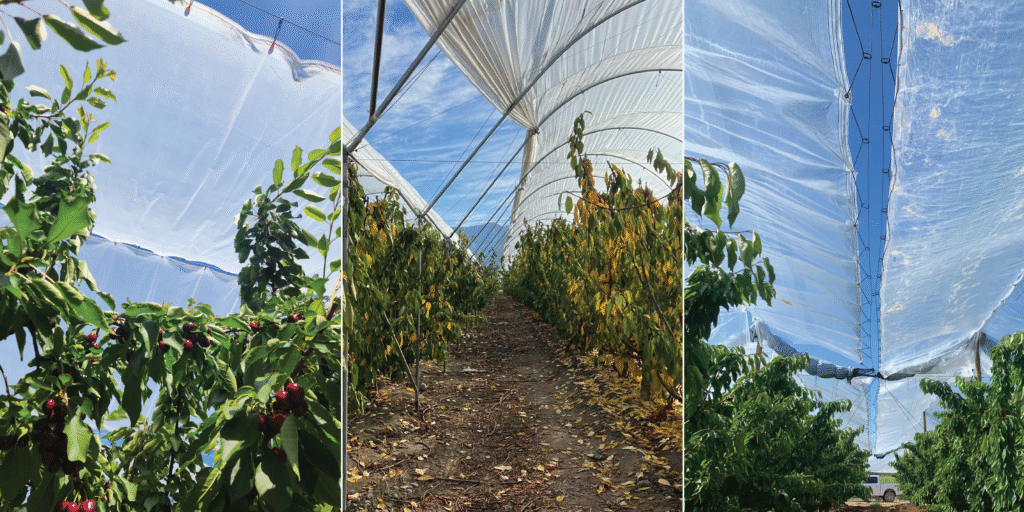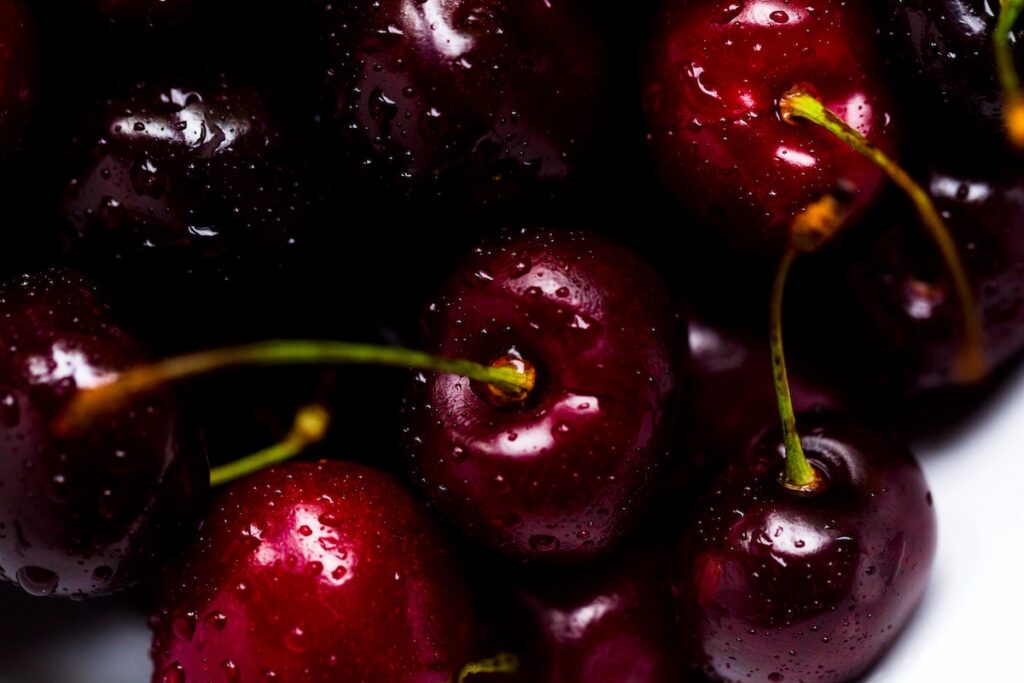By: Eduardo Parra, Agricultural Engineer, Technical Manager ZeroSeven – Carlos J. Tapia, Agricultural Engineer M. Sc., Technical Director Avium.
The great desire of every producer is undoubtedly to advance the harvest and improve the productive potential of an orchard and that this eventually translates into a better profitability of the business. Currently, there are a series of strategies that, in one way or another, allow us to approach or achieve these ambitious objectives, of course, without being exempt from risks associated with a bad technical strategy.
Dormancy breakers (RD) continue to be and will continue to be a subject of study for researchers and extension workers, who are constantly trying to replicate different strategies in cherry orchards that can advance or homogenize the initial phenological stages (flowering and budding), and translate this into the advancement or homogenization of the harvest. However, it is necessary to be clear about when and how to use either hydrogenated cyanamide or a dormancy breaker.
Cyanamide or dormancy breakers?

Hydrogenated cyanamide is by far the star product when it comes to advancing flowering and in Chile it continues to be used regularly and with good results, despite the fact that the European community suspended its use more than a decade ago; this regulation led many companies, mainly Italian, to quickly look for an option to replace cyanamide, which gave rise to the alternative dormancy breakers that we know today.
While in many countries these products are used as substitutes for cyanamide, in our orchards they are used either as a replacement or a complement, depending on the objective and what each producer seeks, both at a productive and commercial level.
In simple terms, and we will go into more detail later, hydrogenated cyanamide alone has a great effect on the advancement of phenological states and harvest, while dormancy breakers have a greater role in the homogenization of said states.
Alternative RDs have the ability to generate synchrony in the initial phenological stages, even having a great power of action on the stimulation of vegetative buds, generating flowering much more accompanied by leaves. This is convenient from the energetic point of view (photosynthesis) for the first stages of development, given the lack of nutrients via the roots due to the absence of temperatures in the soil that allow the beginning of root development at significant rates.
Meanwhile, hydrogenated cyanamide alone has a great effect on the anticipation of phenological states and alternative RDs, and plays a major role in synchrony or homogenization. However, the final decision to use it, as we have already mentioned, must be accompanied by a clear strategy that truly benefits production and avoids generating risks that could bring consequences that are radically opposite to the initial objective.
It is often mistakenly believed that direct application of RD will be effective and will allow for greater profits in the season; however, there are multiple factors that influence and determine the success or failure of an orchard's production.
What requirements must an orchard meet for a correct application of RD?
Dormancy breakers, when used correctly and in compliance with strict requirements, will allow for earlier and/or more uniform harvesting and flowering; this, depending on the conditions of the season itself, could eventually translate into improved profitability of the orchard.
But how to determine the effectiveness of the strategy, what type of RD should be used, when should this intervention of the cherry phenological state be carried out?
There are many questions, but there are several aspects that must be taken into consideration. On the one hand, the decision to advance phenological states, such as flowering, setting, and harvest, mainly for early varieties, and in early areas to advance or partialize part of the surface of an orchard, in the case of a large area, and also to advance or synchronize varieties that need to be pollinated with another variety, or "simply" based on a commercial decision depending on the current year as a personal vision of each producer and their strategy.

It may seem silly to reiterate the importance of being very organized when applying cyanamide or RD, however the success of the strategy depends on this and we must not lose focus on it.
It is also important to plan the application strategy. For example, if a sector of the orchard is applied with cyanamide plus a breaker (applied 3-5 days after cyanamide), it will advance flowering more and, therefore, will also advance the harvest by a few days. Another sector can be left, as long as the accumulation of cold hours allows it (at least 70 percent of the varietal requirement met), with only RD, that is, without cyanamide, which will advance flowering less and, consequently, also less the harvest.
It should be noted that in multiple studies carried out, the advance in days of harvest with the use of any dormancy-breaking strategy (including cyanamide) can be a maximum of 50% of what was achieved to advance full flower. That is, if full flower was advanced 10 days, the harvest could be advanced a maximum of 5 days.
However, if cyanamide is used because the cold needs require it, and it is complemented with groundbreaking agents throughout the orchard, the logistics, materials and operation of a harvest must be clear in advance. If this is not taken into account, complications could arise in practice, which makes it advisable to apply products or a combination of these by sectors and with the greatest amount of information possible for decision-making.
On the other hand, regarding when to apply RD, recent studies have allowed some of them to be applied quite late in winter or very early in the flowering process, a process known as “August application”; applications have been made up to 25 days before the start of the flower, application with swollen buds and it has been proven that it does not advance flowering, but it dominates and synchronizes the orchard very well, without having recognized phytotoxicity as long as the orchard in question has had the sanitary conditions for its use.
If a “date” is considered, or rather, a minimum phenological moment to apply cyanamide or RD, it should be after at least 70 percent of the variety’s chilling hour requirement has been met. Once the hydrogenated cyanamide has been applied, we apply the RD on average 6 to 7 days later, with this we would then be seeking to advance and homogenize our flowering and harvesting as much as possible. If the accumulation of chilling hours allows it, or if the strategy is different from the previous one and we can do without cyanamide, we could apply some RD up to 25 days before the usual start of flowering, with this we would seek to avoid early flowering and therefore early harvesting and only achieve synchrony and greater early vegetative development.
Specifically, the application strategies for hydrogenated cyanamide and dormancy breakers depend exclusively on what is sought to be done with each orchard, and can be summarized as follows:
● Option 1: Hydrogenated cyanamide: Advances flowering and harvest, but does not ensure homogenization of phenology.
● Option 2: Hydrogenated cyanamide + RD: advances flowering and harvest and contributes to the homogenization and synchronization of the orchard. RD applied 3-6 days after cyanamide. Treatment for maximum advance in harvest.
● Option 3: RD only (applied on cyanamide date): homogenizes and synchronizes the flowering of the orchard; intermediate advance situation between the application of cyanamide and a treatment without application.
● Option 4: Only RD, but late in the season: it does not advance flowering at all, but it synchronizes and homogenizes flowering.
In practice, marked differences have been seen when comparing the different strategies (Fig 1.)

Figure 1 clearly shows that the combination of cyanamide + RD is the one that presents the greatest advance in full flower (vertical lines in each treatment), followed by the application of hydrogenated cyanamide alone, and then by both options (1 and 2) of RD with respect to the control.
The recent season saw higher prices for the earliest fruit and this season is expected to be no different; however, physiologically advancing in spring represents risks, such as early frosts, rains and a series of climatic conditions and factors. Therefore, when planning a strategy for applying cyanamide or RD, it is necessary to take into account the area in which the orchard is located, the usual climatic conditions of said area, among other factors that have already been mentioned, and that it is not a purely commercial issue.
On the other hand, a correct application of the products must be considered, as well as the calibration of the machinery with which said application will be carried out. A clear example of an error is to carry out an application out of dose, with high concentration or excessive wetting, which can generate phytotoxicity or damage to the wood and flower primordia.
As for the machines, it is estimated that 90 percent of those used in Chile to apply agricultural products have some type of calibration problem, a situation that must be resolved urgently, since the effectiveness of the products, in this case cyanamide or RD, depends 50 percent on their application, along with a correct dose.
Calibrated machinery, with adequate pressure and operation, nozzles in good condition, etc., allows the effectiveness of any applied product to increase. It should not be forgotten that these products (cyanamide and RD) act by contact, therefore, they require water as a carrier, and a well-calibrated machine will reach all parts of the tree with the products in a homogeneous and correct manner, especially the highest part.
Will RDs replace cyanamide?
There is no doubt that hydrogenated cyanamide is by far the best tool to try to advance flowering, however, it is not so clear that this product will be restricted in the short term, as it happened in the European community.
Alternative RDs, which are harmless to the operator, plants and the environment, will be their natural replacement when necessary. It is difficult to match the cyanamide effect, however, dormancy breakers have an attribute that dormancy does not have: homogenizing and synchronizing flowering, with all the benefits that this entails from a productive point of view.
As I homogenize flowering, there are more open flowers at the same dates, therefore, nutritional, phytosanitary or growth regulator programs become more efficient, because they impact a greater number of flowers, this explains the results of multiple studies with improvements in fruit set, retention, size or orchard productivity.
Today we have cyanamide and RD as tools to advance flowering, harvest, homogenize and synchronize orchards, and it is essential that the strategy used with one or the other, or both products together, is carried out with as much information as possible and in a coherent manner. This will minimize the risks, although there will always be room for doubt after a decision that is made in the middle of winter and whose consequences will only be seen three or four months later, and which, by the way, are expected to be as expected.








